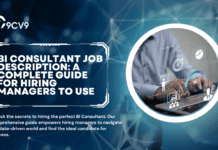Key Takeaways
- Employer compliance monitoring ensures companies adhere to labor laws, data protection rules, and ethical standards through continuous oversight.
- Modern compliance tools powered by AI, analytics, and automation enable proactive risk detection and improve audit accuracy.
- Effective compliance monitoring builds corporate integrity, reduces legal risks, and strengthens long-term business sustainability.
In today’s rapidly evolving business landscape, maintaining regulatory compliance has become one of the most critical responsibilities for organizations across all industries. As companies expand globally, adopt hybrid work models, and handle increasingly complex data systems, the need for robust employer compliance monitoring has never been greater. Failing to comply with labor laws, data protection regulations, occupational safety standards, and industry-specific requirements can result in severe financial penalties, legal consequences, and lasting reputational damage. Consequently, modern employers are now prioritizing proactive monitoring systems to ensure full adherence to both internal policies and external regulatory obligations.

Employer compliance monitoring refers to the structured process of continuously tracking, assessing, and managing an organization’s compliance with legal, ethical, and operational standards. This includes everything from employment contracts, payroll accuracy, workplace safety, and data privacy practices to broader governance and corporate social responsibility commitments. Unlike reactive compliance approaches that address issues after violations occur, compliance monitoring focuses on early detection and prevention. Through a combination of automated systems, policy reviews, internal audits, and data-driven insights, companies can identify potential risks before they escalate into regulatory breaches.
The importance of employer compliance monitoring extends beyond avoiding fines or sanctions. It plays a fundamental role in establishing corporate integrity, fostering transparency, and building trust among employees, clients, investors, and regulators. A well-implemented monitoring framework demonstrates an organization’s commitment to fair labor practices, ethical behavior, and responsible management. It also provides senior leaders and compliance officers with actionable intelligence to make informed decisions that align with legal and moral standards.
With the growing adoption of advanced technologies such as artificial intelligence, data analytics, and automation, compliance monitoring is becoming more sophisticated and precise. Organizations can now integrate real-time reporting tools, predictive risk assessment models, and digital audit trails into their compliance programs. These innovations not only streamline monitoring activities but also enhance accuracy, accountability, and operational efficiency. For instance, automated compliance dashboards can track changes in employment laws, flag potential violations, and recommend corrective actions instantly, reducing human error and response time.
Understanding how employer compliance monitoring works is essential for every business that seeks to operate ethically, legally, and sustainably. This process involves several interconnected steps—identifying applicable regulations, implementing monitoring mechanisms, conducting regular audits, analyzing compliance data, and applying corrective actions when necessary. By following a structured and continuous approach, organizations can maintain compliance integrity even in highly regulated environments.
As global compliance landscapes continue to evolve, staying ahead of these changes is no longer optional—it is a strategic necessity. Whether you are a small enterprise or a multinational corporation, developing a strong compliance monitoring framework ensures business resilience, mitigates risks, and strengthens your organization’s long-term reputation. This article explores the concept of employer compliance monitoring in detail, explains how it works, and highlights its growing importance in helping businesses navigate complex regulatory environments with confidence and integrity.
Before we venture further into this article, we would like to share who we are and what we do.
About 9cv9
9cv9 is a business tech startup based in Singapore and Asia, with a strong presence all over the world.
With over nine years of startup and business experience, and being highly involved in connecting with thousands of companies and startups, the 9cv9 team has listed some important learning points in this overview of What is Employer Compliance Monitoring and How It Works.
If your company needs recruitment and headhunting services to hire top-quality employees, you can use 9cv9 headhunting and recruitment services to hire top talents and candidates. Find out more here, or send over an email to [email protected].
Or just post 1 free job posting here at 9cv9 Hiring Portal in under 10 minutes.
What is Employer Compliance Monitoring and How It Works
- What is Employer Compliance Monitoring?
- Key Components of Employer Compliance Monitoring
- How Employer Compliance Monitoring Works – Step-By-Step
- Benefits of Employer Compliance Monitoring
- Common Challenges and Pitfalls
- Best Practices for Effective Employer Compliance Monitoring
- Tools and Technologies Supporting Employer Compliance Monitoring
- Case Studies or Real-World Examples
- Future Trends in Employer Compliance Monitoring
1. What is Employer Compliance Monitoring?
Employer compliance monitoring is a systematic process that enables organizations to ensure that all employment practices, workplace operations, and business procedures adhere to local, national, and international laws, regulations, and internal standards. It is a continuous oversight function designed to detect, evaluate, and rectify compliance risks before they result in penalties or reputational harm. This process serves as the backbone of corporate governance and ethical responsibility, particularly for companies operating across multiple jurisdictions or in highly regulated sectors such as finance, healthcare, and manufacturing.
Understanding the Concept of Employer Compliance Monitoring
Employer compliance monitoring focuses on tracking how well an organization meets its legal and regulatory obligations toward employees, stakeholders, and external authorities. It encompasses multiple compliance domains including labor laws, payroll regulations, occupational safety, data protection, anti-discrimination laws, and ethical business conduct. The goal is not only to remain legally compliant but also to cultivate a culture of accountability and integrity throughout the organization.
Key Focus Areas of Employer Compliance Monitoring
- Labor Law Compliance
- Ensuring adherence to local employment regulations regarding minimum wage, overtime, working hours, and employee classification.
- Example: In the United States, the Fair Labor Standards Act (FLSA) requires employers to pay eligible employees overtime wages. Failure to monitor this can lead to costly lawsuits and back payments.
- Workplace Safety and Health
- Compliance with occupational safety standards established by organizations such as OSHA (Occupational Safety and Health Administration) or international equivalents.
- Example: A manufacturing company conducts monthly safety inspections and hazard risk assessments to ensure all machinery meets safety guidelines.
- Payroll and Benefits Accuracy
- Monitoring payroll calculations, deductions, and benefits contributions to prevent discrepancies and financial non-compliance.
- Example: Companies use payroll compliance software to ensure correct tax filings and social security contributions in each operating country.
- Anti-Discrimination and Equal Opportunity Laws
- Ensuring fair recruitment, promotion, and compensation practices regardless of gender, ethnicity, or disability.
- Example: A global corporation regularly audits hiring data to detect any potential bias in its talent acquisition process.
- Data Protection and Employee Privacy
- Compliance with data privacy regulations such as GDPR or CCPA when handling employee information.
- Example: HR departments implement data encryption and limited access controls to protect sensitive employee data.
Table: Common Areas of Employer Compliance Monitoring
| Compliance Area | Objective | Monitoring Mechanism | Example |
|---|---|---|---|
| Labor Law Compliance | Ensure fair employment terms | Regular audits, time-tracking systems | Monitoring overtime pay under FLSA |
| Workplace Safety | Maintain a safe working environment | Safety inspections, risk assessments | OSHA inspection checklists |
| Payroll and Benefits | Prevent payroll errors and tax discrepancies | Payroll compliance software | Automated tax deduction checks |
| Anti-Discrimination | Promote diversity and equality | Bias detection tools, HR analytics | Gender pay gap audits |
| Data Protection | Safeguard employee information | Data encryption, access logs | GDPR compliance monitoring |
Importance of Employer Compliance Monitoring
- Legal Risk Mitigation
- Effective monitoring helps organizations avoid violations that could lead to regulatory fines, lawsuits, or criminal charges.
- It ensures businesses can provide proof of due diligence during audits or investigations.
- Enhanced Corporate Reputation
- Demonstrating ethical compliance strengthens trust with employees, customers, and investors.
- Example: Companies with transparent compliance programs often perform better in ESG (Environmental, Social, and Governance) evaluations.
- Operational Efficiency
- Streamlined compliance procedures reduce administrative burdens, improve reporting accuracy, and save costs related to legal disputes.
- Example: Integrating compliance dashboards in HR systems helps detect payroll discrepancies in real time.
- Improved Employee Satisfaction
- Fair treatment, transparent policies, and safe work environments lead to higher employee retention and morale.
- Monitoring ensures employees feel protected under consistent company policies.
How Employer Compliance Monitoring Differs from Other Compliance Types
| Compliance Type | Focus Area | Primary Goal | Example |
|---|---|---|---|
| Employer Compliance | Employment laws, HR operations | Legal adherence and ethical HR practices | Monitoring workplace safety and wage compliance |
| Financial Compliance | Accounting standards, taxation | Prevent financial misreporting | Adhering to IFRS or GAAP |
| Environmental Compliance | Environmental protection laws | Sustainability and regulatory adherence | Monitoring emissions or waste disposal |
| Data Compliance | Privacy and cybersecurity regulations | Protect personal and business data | GDPR and CCPA adherence |
Matrix: Risk Levels in Employer Compliance Monitoring
| Risk Category | Description | Monitoring Frequency | Responsible Department |
|---|---|---|---|
| High Risk | Involves employee safety, payroll accuracy, or discrimination | Weekly/Monthly | HR & Compliance Office |
| Medium Risk | Involves policy documentation or reporting | Quarterly | HR Department |
| Low Risk | Involves internal communications and awareness training | Semi-Annually | HR Training Unit |
Real-World Example
A multinational logistics firm operating across Southeast Asia implemented an AI-powered compliance monitoring platform to ensure all regional branches complied with local labor and tax laws. The system automatically tracked changes in national labor codes, updated payroll formulas, and generated compliance alerts whenever discrepancies were detected. Within one year, the company reduced compliance-related penalties by 75% and improved audit readiness across all branches.
Another example can be found in the healthcare sector, where a hospital system used electronic audit systems to monitor employee training records and occupational safety standards. The proactive monitoring helped identify staff members who required mandatory safety certifications, thus avoiding costly regulatory sanctions.
In essence, employer compliance monitoring is the foundation of an organization’s legal and ethical stability. It ensures that businesses operate responsibly, uphold employee rights, and maintain operational transparency across all levels. By embedding continuous monitoring mechanisms and leveraging digital compliance tools, companies can confidently navigate complex regulatory environments while fostering trust, accountability, and long-term sustainability.
2. Key Components of Employer Compliance Monitoring
Employer compliance monitoring involves several core components that work together to create an integrated system of control, reporting, and risk management. Each component plays a vital role in ensuring that every aspect of an organization’s employment practice complies with relevant labor laws, internal policies, and ethical standards. A well-structured compliance monitoring framework allows organizations to detect issues early, mitigate risks effectively, and maintain accountability throughout all levels of the enterprise.
Risk Assessment and Compliance Mapping
- Identifying Applicable Regulations
- Organizations must begin by identifying all legal, regulatory, and contractual obligations that apply to their business and workforce.
- These may include labor codes, taxation laws, anti-harassment policies, occupational safety standards, and industry-specific compliance requirements.
- Example: A multinational IT company operating in the European Union must comply with the GDPR for employee data protection, while its U.S. offices must follow EEOC anti-discrimination rules.
- Evaluating Compliance Risk Levels
- Each regulation or policy carries varying degrees of risk. Risk assessment helps prioritize compliance areas requiring close monitoring.
- Example: Payroll accuracy may pose a high-risk factor, while uniform policy documentation may be a medium-risk factor.
- Creating a Compliance Risk Matrix
| Compliance Area | Risk Level | Potential Impact | Monitoring Frequency | Responsible Department |
|---|---|---|---|---|
| Payroll Accuracy | High | Legal penalties, employee disputes | Monthly | HR and Finance |
| Workplace Safety | High | Accidents, fines, legal liability | Weekly | Operations and Safety |
| Data Protection | Medium | Data breach, reputational loss | Quarterly | IT and HR |
| Equal Opportunity Practices | Medium | Discrimination lawsuits | Quarterly | HR Compliance |
| Training Documentation | Low | Administrative delays | Semi-annually | HR Training |
Policy and Procedure Development
- Establishing Clear Compliance Policies
- Every organization must translate its legal obligations into actionable internal policies that employees can easily understand and follow.
- Policies should include guidelines on hiring, compensation, workplace safety, data management, and ethical conduct.
- Example: A healthcare firm develops a detailed HIPAA compliance policy outlining how employee and patient data must be handled and secured.
- Communication and Policy Accessibility
- Policies should be clearly communicated through employee handbooks, internal portals, or onboarding programs.
- Regular updates must be provided when new regulations come into effect or existing laws change.
- Compliance Documentation Lifecycle
| Stage | Description | Responsible Party | Review Cycle |
|---|---|---|---|
| Policy Creation | Drafting of compliance-related documents | Legal & HR Team | Annually |
| Policy Dissemination | Sharing and training across organization | HR & Learning Dept. | Bi-annually |
| Policy Review and Update | Ensuring alignment with new regulations | Compliance Committee | Quarterly |
| Policy Archival | Storing and maintaining older versions | Records Management | Continuous |
Monitoring Mechanisms and Data Tracking
- Automated Monitoring Systems
- Modern compliance programs integrate digital tools and dashboards that track key compliance metrics in real time.
- Example: A payroll management system can automatically detect wage inconsistencies and alert the compliance team.
- Manual Audits and On-Site Reviews
- Human-led audits remain essential for verifying that digital systems align with operational realities.
- Example: A manufacturing company’s safety team conducts monthly inspections to verify compliance with equipment maintenance standards.
- Continuous Data Analysis
- Data analytics tools identify trends and anomalies in employee data, payroll reports, or HR records to forecast potential non-compliance areas.
| Monitoring Method | Description | Benefits | Example Implementation |
|---|---|---|---|
| Automated Dashboards | Software that provides live compliance data | Real-time alerts, accuracy | Real-time payroll error detection |
| Internal Audits | Manual verification of compliance metrics | Human oversight, verification | Quarterly HR compliance audits |
| Third-Party Assessments | External audits or certifications | Objective evaluation | ISO or SOC 2 audits |
| Predictive Analytics | AI-driven compliance forecasting | Early risk detection | Machine learning payroll analysis |
Reporting and Escalation Procedures
- Incident Reporting
- Establishing a transparent reporting process ensures employees can report compliance issues confidentially.
- Example: Anonymous reporting portals allow staff to report workplace discrimination or safety violations.
- Escalation Framework
- Compliance issues should follow a structured escalation path from detection to resolution.
Compliance Escalation Framework
| Stage | Action Taken | Responsible Party | Expected Timeframe |
|---|---|---|---|
| Detection | Identification of non-compliance issue | Department Head | Immediate |
| Reporting | Submission of incident report | Compliance Officer | Within 24 hours |
| Investigation | Root cause analysis | Internal Audit Team | 5–7 business days |
| Remediation | Implementation of corrective action | HR and Legal | 2–3 weeks |
| Review | Evaluate effectiveness of resolution | Compliance Committee | Monthly |
Roles and Responsibilities in Compliance Monitoring
- Senior Management
- Defines compliance strategy, allocates resources, and ensures organization-wide accountability.
- Example: Executives approve compliance budgets and oversee training programs.
- Compliance Officers
- Monitor compliance processes, conduct investigations, and liaise with regulatory bodies.
- Human Resources and Legal Teams
- Handle policy creation, employee communication, and enforcement.
- Employees
- Expected to understand and follow all compliance procedures outlined by the organization.
Continuous Improvement and Adaptation
- Regular Evaluation of Compliance Effectiveness
- Organizations should conduct periodic reviews to evaluate how well monitoring systems are performing.
- Example: A quarterly compliance scorecard can measure policy adherence rates across departments.
- Integration of Feedback and Lessons Learned
- Compliance outcomes and incident analyses should inform updates to training, policies, and risk frameworks.
- Adoption of Technological Innovations
- Artificial intelligence, predictive analytics, and cloud-based monitoring systems are transforming compliance efficiency and responsiveness.
- Example: Companies use AI to predict upcoming labor regulation changes and automate policy updates accordingly.
Visual Overview: Employer Compliance Monitoring Framework
| Component | Description | Tools and Techniques Used | Outcome |
|---|---|---|---|
| Risk Assessment | Identify and rank compliance obligations | Risk matrix, heat maps | Prioritized compliance focus areas |
| Policy Development | Create and communicate internal policies | Policy management platforms | Clear and standardized compliance rules |
| Monitoring Mechanisms | Implement digital and manual oversight tools | Dashboards, audits, analytics | Continuous compliance verification |
| Reporting and Escalation | Establish structured incident handling | Reporting portals, escalation chains | Quick and transparent issue resolution |
| Continuous Improvement | Review and adapt compliance framework | KPIs, feedback systems, AI tools | Sustainable long-term compliance growth |
Employer compliance monitoring is not a one-time effort but an ongoing, dynamic system that evolves with changing laws, technologies, and business practices. Organizations that effectively integrate these key components build a resilient compliance culture that enhances operational transparency, minimizes risk exposure, and strengthens stakeholder confidence in the company’s ethical and legal integrity.
3. How Employer Compliance Monitoring Works – Step-By-Step
Employer compliance monitoring operates as a structured, cyclical process that ensures organizations stay aligned with legal, ethical, and internal regulatory standards. It involves a combination of proactive planning, data analysis, internal controls, and continuous evaluation. This systematic approach enables companies to identify compliance risks early, address issues effectively, and maintain consistent adherence to evolving legal frameworks.
Step 1: Identifying Applicable Regulations and Standards
- Mapping Legal and Regulatory Requirements
- Organizations begin by identifying all laws, regulations, and industry standards applicable to their workforce and operations.
- This includes labor laws, tax regulations, health and safety requirements, and data privacy mandates.
- Example: A Singapore-based logistics firm must comply with the country’s Employment Act, Workplace Safety and Health Act, and Personal Data Protection Act simultaneously.
- Classifying Internal Compliance Policies
- Companies align internal policies such as employee handbooks, conduct codes, and payroll procedures with the identified regulations.
- This creates a unified compliance map linking internal procedures to external legal obligations.
Compliance Mapping Matrix
| Regulatory Area | External Law / Standard | Internal Policy Alignment | Responsible Department |
|---|---|---|---|
| Labor and Employment | Employment Act, FLSA | HR Policy Handbook | Human Resources |
| Workplace Safety | OSHA, ISO 45001 | Safety Procedures Manual | Operations |
| Data Protection | GDPR, PDPA | Data Handling Policy | IT / Data Management |
| Payroll and Tax Compliance | Income Tax Act, Social Security Acts | Payroll Compliance Policy | Finance & HR |
Step 2: Conducting Compliance Risk Assessment
- Evaluating Compliance Risk Exposure
- Once regulations are mapped, organizations assess which areas pose the highest risk based on factors such as operational complexity, employee count, and jurisdictional variation.
- Prioritizing Risk Categories
- Risk levels are categorized as high, medium, or low to determine monitoring frequency and resource allocation.
Compliance Risk Heat Map
| Compliance Area | Risk Probability | Impact Level | Overall Risk Rating | Monitoring Frequency |
|---|---|---|---|---|
| Payroll Accuracy | High | High | Critical | Monthly |
| Workplace Safety | Medium | High | Elevated | Quarterly |
| Data Privacy | Medium | Medium | Moderate | Quarterly |
| Equal Opportunity | Low | Medium | Controlled | Bi-Annually |
Example: A construction company identifies high-risk areas in safety compliance due to hazardous operations and prioritizes weekly inspections and training programs to prevent violations.
Step 3: Designing the Compliance Monitoring Framework
- Defining Monitoring Objectives
- Organizations must establish clear objectives outlining what will be monitored, how often, and which key performance indicators (KPIs) will be tracked.
- Selecting Monitoring Tools and Methods
- Automated compliance systems, internal audits, and manual reviews are used to collect and evaluate compliance data.
- Assigning Roles and Responsibilities
- Each compliance area should have designated accountability, ensuring smooth coordination between HR, legal, and operational departments.
Monitoring Framework Chart
| Compliance Function | Monitoring Tool Used | Responsible Party | Reporting Cycle | Key Performance Indicator |
|---|---|---|---|---|
| Payroll Compliance | Payroll Software with Audit Logs | HR and Finance Team | Monthly | Error Rate <1% |
| Safety Compliance | Inspection Checklists, IoT Sensors | Safety Officer | Weekly | Zero Major Incidents |
| Data Privacy | Encryption Monitoring Tools | IT Department | Quarterly | Zero Unauthorized Data Breaches |
| Ethics and Conduct | Whistleblower Hotline Reports | Compliance Officer | Ongoing | Number of Resolved Cases per Quarter |
Step 4: Implementing Monitoring Activities
- Data Collection and Tracking
- Regular data gathering from employee files, payroll systems, and workplace inspections ensures that compliance indicators are constantly updated.
- Automation of Compliance Workflows
- Digital dashboards and analytics automate monitoring processes, reducing manual errors and ensuring consistency.
- Example: A multinational corporation integrates an AI-based compliance monitoring system that automatically checks payroll alignment across global offices.
- Regular Audits and Spot Checks
- Periodic internal audits verify that systems are functioning effectively and that any issues are promptly addressed.
Compliance Monitoring Lifecycle
| Activity Phase | Description | Duration | Output |
|---|---|---|---|
| Data Collection | Gathering compliance metrics and reports | Ongoing | Real-time Compliance Dashboard |
| Audit Review | Manual and automated checks | Monthly | Audit Report Summary |
| Issue Identification | Detecting non-compliance trends | Continuous | Alerts and Notifications |
| Corrective Action | Implementing policy updates and remediation | As Needed | Compliance Improvement Plan |
Step 5: Issue Detection and Reporting
- Identifying Non-Compliance
- Deviations are detected through audit results, analytics, or employee reports.
- Example: A retail chain detects wage discrepancies through automated payroll verification alerts.
- Reporting Protocols
- Issues must be documented and communicated through a structured reporting framework that ensures accountability and traceability.
Incident Reporting Framework
| Incident Type | Detection Source | Escalation Path | Response Time | Resolution Authority |
|---|---|---|---|---|
| Payroll Discrepancy | Payroll System Alert | HR → Finance → Compliance | 2 Days | HR Compliance Manager |
| Safety Violation | Inspection Report | Operations → Legal → CEO | Immediate | Head of Operations |
| Data Breach Incident | System Log Analysis | IT → Legal → Board | 24 Hours | Chief Information Officer |
Step 6: Investigation and Remediation
- Root Cause Analysis
- A structured investigation process determines the underlying cause of non-compliance, whether it stems from system errors, human mistakes, or policy gaps.
- Implementation of Corrective Actions
- Once identified, corrective measures such as staff retraining, policy revision, or system updates are executed.
- Verification of Compliance Restoration
- Post-remediation audits confirm that the issue has been resolved and that controls are effectively preventing recurrence.
Example: A financial firm experiencing repeated documentation lapses revises its employee verification process, introduces automated ID checks, and conducts follow-up audits within 30 days.
Step 7: Review, Evaluation, and Continuous Improvement
- Compliance Performance Evaluation
- The final stage involves measuring the effectiveness of compliance activities using quantitative metrics such as compliance scores, incident frequency, and resolution times.
- Updating Policies and Procedures
- Based on insights gained, organizations update their compliance frameworks to align with new legal requirements and technological developments.
- Integrating Continuous Improvement Models
- The “Plan–Do–Check–Act” (PDCA) cycle is often used to ensure compliance frameworks evolve consistently.
Continuous Compliance Improvement Model
| Phase | Description | Objective |
|---|---|---|
| Plan | Define compliance goals and standards | Strategic Planning |
| Do | Implement compliance controls | Execution and Monitoring |
| Check | Review results and detect issues | Performance Evaluation |
| Act | Apply corrective and preventive actions | Long-term Compliance Enhancement |
Example: A global manufacturing company applies the PDCA cycle to refine its safety compliance program annually, resulting in a 40% reduction in reported incidents within two years.
Summary Chart: The Employer Compliance Monitoring Process
| Step | Process Stage | Primary Objective | Tools / Techniques Used | Output Outcome |
|---|---|---|---|---|
| 1 | Identify Regulations and Policies | Define compliance obligations | Regulatory Mapping, Legal Review | Compliance Map |
| 2 | Risk Assessment | Prioritize critical compliance risks | Heat Maps, Risk Matrix | Risk-Weighted Action Plan |
| 3 | Framework Design | Establish monitoring structure | Dashboards, KPIs, Responsibility Charts | Monitoring Framework |
| 4 | Monitoring Implementation | Execute compliance activities | Audits, Automation, Analytics | Real-Time Compliance Visibility |
| 5 | Issue Detection and Reporting | Identify and communicate deviations | Alerts, Reports, Escalation Framework | Transparent Issue Documentation |
| 6 | Remediation and Investigation | Resolve and prevent non-compliance | Root Cause Analysis, Corrective Actions | Compliance Restoration |
| 7 | Continuous Improvement | Evolve with regulations and trends | PDCA Cycle, Data Analytics | Sustainable Compliance Performance |
Employer compliance monitoring functions as an ongoing cycle rather than a one-time activity. When properly executed, it strengthens regulatory alignment, minimizes risk exposure, and enhances the organization’s reputation for integrity. By adopting this step-by-step model, businesses can transform compliance from a reactive requirement into a strategic advantage that drives operational excellence and stakeholder trust.
4. Benefits of Employer Compliance Monitoring
Employer compliance monitoring delivers far-reaching benefits that enhance operational efficiency, minimize risks, and strengthen an organization’s ethical and legal foundations. Beyond fulfilling regulatory requirements, it enables companies to build trust, maintain workforce integrity, and sustain long-term business success. Below are the key benefits explained in detail, supported by practical examples and analytical tables for better understanding.
Enhanced Legal and Regulatory Adherence
- Prevention of Legal Violations
- Compliance monitoring ensures that companies remain up to date with changing labor laws, tax regulations, and workplace standards.
- Continuous tracking helps identify and rectify potential violations before they lead to penalties or lawsuits.
- Example: A global financial firm uses automated compliance alerts to detect changes in employment regulations across different jurisdictions, preventing unintentional breaches.
- Reduced Legal Liabilities and Fines
- Regular monitoring minimizes the risk of financial penalties imposed by government agencies.
- Organizations with proactive monitoring systems face fewer legal disputes due to early issue detection and swift resolution.
Legal Compliance Benefit Matrix
| Benefit Type | Description | Impact Level | Example Application |
|---|---|---|---|
| Regulatory Adherence | Ensures alignment with national and global laws | High | Global payroll compliance tracking |
| Penalty Avoidance | Prevents costly fines and sanctions | High | Early detection of overtime violations |
| Contractual Compliance | Maintains obligations with employees and vendors | Medium | Automated contract monitoring systems |
Strengthened Risk Management and Operational Control
- Early Detection of Compliance Gaps
- Real-time monitoring allows organizations to detect deviations from compliance standards as they occur.
- This proactive approach reduces the chances of small issues escalating into serious risks.
- Improved Decision-Making
- Data-driven compliance reports provide senior management with actionable insights for informed strategic planning.
- Example: A manufacturing company identifies recurring safety violations through monthly compliance dashboards and revises its training modules accordingly.
Risk Management Benefit Chart
| Risk Type | Compliance Control Measure | Detection Method | Outcome |
|---|---|---|---|
| Payroll Miscalculations | Payroll Software Audits | Automated Alerts | Reduced Payroll Errors by 85% |
| Safety Non-Compliance | Weekly Site Inspections | Safety Scorecards | Decreased Incidents by 40% |
| Data Privacy Risks | Encryption and Log Monitoring | Automated System Logs | No Major Breaches Recorded |
Boosted Corporate Reputation and Employer Branding
- Building Trust with Stakeholders
- Demonstrating consistent compliance fosters confidence among clients, employees, and regulators.
- Transparency in compliance efforts reinforces brand credibility and ethical integrity.
- Competitive Advantage in Talent Acquisition
- Companies known for ethical operations attract top-tier talent and reduce turnover rates.
- Example: A technology company with transparent compliance programs and employee protection policies is ranked among the best workplaces in Asia.
Corporate Reputation Enhancement Matrix
| Reputation Element | Compliance Influence | Resulting Benefit |
|---|---|---|
| Employee Trust | Transparent HR and payroll practices | Higher Employee Retention |
| Client Confidence | Ethical data management and governance | Long-Term Partnerships |
| Regulatory Relationships | Demonstrated compliance cooperation | Reduced Audit Interventions |
Improved Workplace Safety and Employee Well-being
- Ensuring Occupational Safety Standards
- Regular compliance audits help maintain a safe and healthy workplace by identifying potential hazards.
- Example: A logistics firm’s compliance system triggers alerts for overdue equipment inspections, preventing mechanical failures.
- Promoting Employee Welfare and Fair Treatment
- Monitoring ensures compliance with labor rights, working hours, and fair compensation.
- This enhances job satisfaction and productivity while reducing grievance cases.
Employee Well-being Compliance Table
| Compliance Focus Area | Monitoring Method | Key Outcome |
|---|---|---|
| Health and Safety | IoT Sensors, Inspection Logs | Fewer Workplace Accidents |
| Labor Rights | Payroll and Time Tracking | On-Time Salary and Overtime Accuracy |
| Equality and Diversity | Recruitment Data Analytics | Improved Diversity Representation |
Enhanced Data Security and Privacy Protection
- Safeguarding Sensitive Employee Information
- Compliance monitoring systems track data access and prevent unauthorized use or leaks.
- Example: HR departments utilize data encryption tools and access-level controls to ensure GDPR and PDPA compliance.
- Reducing Cybersecurity and Data Breach Risks
- Regular system audits ensure IT infrastructure remains secure against vulnerabilities.
- Early detection mechanisms protect the organization from costly breaches.
Data Protection Compliance Overview
| Data Compliance Measure | Implementation Tool | Benefit Achieved |
|---|---|---|
| Encryption Monitoring | Automated Encryption Systems | Data Confidentiality Maintained |
| Access Control Audits | Role-Based Access Management | Reduced Unauthorized Access Incidents |
| Compliance Documentation | Digital Audit Trail | Full Traceability and Accountability |
Enhanced Financial Efficiency and Resource Optimization
- Cost Savings through Automated Monitoring
- Automation reduces manual compliance workloads and resource inefficiencies.
- Example: A global HR outsourcing firm uses automated reporting tools that cut compliance auditing costs by 50%.
- Prevention of Financial Losses from Violations
- By identifying risks early, companies avoid unplanned expenses related to legal proceedings, employee claims, and reputational recovery.
Financial Benefit Table
| Financial Aspect | Compliance Mechanism Used | Savings Realized |
|---|---|---|
| Labor Law Violations | Automated Contract Auditing | Avoided $500,000 in Fines Annually |
| Payroll Accuracy | Payroll Compliance Dashboard | Reduced Overpayment Errors |
| Legal Dispute Management | Centralized Case Tracking System | Lowered Legal Fees and Penalties |
Promotion of Ethical Governance and Corporate Integrity
- Strengthened Accountability and Transparency
- Employer compliance monitoring promotes a culture of honesty and ethical decision-making.
- Documented audit trails ensure every compliance action is verifiable and transparent.
- Alignment with Corporate Social Responsibility (CSR)
- Ethical compliance practices align with CSR initiatives by promoting fairness, diversity, and sustainability.
Governance and Integrity Matrix
| Governance Area | Compliance Function | Strategic Outcome |
|---|---|---|
| Ethical Conduct | Code of Ethics and Behavior Audits | Stronger Organizational Integrity |
| Anti-Discrimination | HR Compliance Analytics | Inclusive and Diverse Workforce |
| Environmental Safety | Green Compliance Auditing | Sustainability and CSR Compliance |
Increased Organizational Agility and Long-Term Sustainability
- Adaptability to Regulatory Changes
- Compliance monitoring frameworks enable companies to respond swiftly to new laws or policy shifts.
- Example: During changes in tax regulations, an automated compliance system updates payroll configurations immediately, preventing errors.
- Sustained Competitive Performance
- Compliance-driven organizations maintain operational continuity and reputation stability, even during regulatory upheavals.
Sustainability and Agility Table
| Sustainability Driver | Compliance Feature Implemented | Business Impact |
|---|---|---|
| Regulatory Agility | Real-Time Law Update Systems | Immediate Compliance Adjustments |
| Operational Continuity | Continuous Audit Mechanisms | No Disruptions During Legal Changes |
| Reputation Longevity | Transparent Compliance Reports | Enhanced Public and Investor Confidence |
In summary, employer compliance monitoring not only ensures legal adherence but also strengthens every aspect of business operations—from workforce well-being and risk reduction to corporate reputation and financial stability. It transforms compliance from a reactive obligation into a proactive strategic advantage that fuels sustainable growth and long-term success.
5. Common Challenges and Pitfalls
While employer compliance monitoring delivers significant advantages, organizations frequently encounter complex challenges that can disrupt effectiveness, accuracy, and sustainability. These obstacles stem from evolving legal frameworks, operational inefficiencies, technological limitations, and human error. Recognizing and addressing these pitfalls is crucial for building a resilient and proactive compliance program.
Regulatory Complexity and Constant Legal Changes
- Ever-Changing Legal Requirements
- One of the biggest challenges organizations face is keeping up with frequent updates to labor, data protection, and safety regulations.
- Global enterprises must manage compliance across multiple jurisdictions, each with distinct rules and enforcement standards.
- Example: A multinational HR outsourcing company operating in Europe, Asia, and the Middle East must simultaneously comply with GDPR, PDPA, and local labor laws, creating ongoing complexity.
- Lack of Centralized Regulatory Tracking
- Many companies rely on manual tracking methods, which can lead to missed updates or outdated compliance records.
- Without automated tools, ensuring real-time alignment with new laws becomes cumbersome and error-prone.
Regulatory Complexity Matrix
| Challenge | Description | Impact Level | Recommended Solution |
|---|---|---|---|
| Frequent Law Amendments | Constant changes in employment and tax laws | High | Regulatory Intelligence Platforms |
| Multi-Jurisdictional Compliance | Different legal systems and enforcement levels | High | Centralized Global Compliance System |
| Manual Policy Tracking | Reliance on spreadsheets and paper documents | Medium | Automated Compliance Monitoring Tools |
Data Management and System Integration Issues
- Fragmented Data Systems
- Compliance data often resides in multiple unconnected systems (HR, payroll, safety, IT), making monitoring inefficient.
- Lack of integration prevents holistic visibility across compliance domains.
- Inconsistent Data Quality
- Human errors in manual entry, outdated records, or incomplete data compromise the accuracy of compliance reports.
- Example: A company using separate payroll and attendance systems faces discrepancies in overtime calculation, resulting in non-compliance with wage laws.
Data Integration Challenge Table
| Data Source | Common Issue | Compliance Impact | Mitigation Approach |
|---|---|---|---|
| HR Systems | Missing employee data | Inaccurate contract verification | Unified HRMS with central database |
| Payroll Software | Data mismatch or duplicates | Payroll and tax reporting errors | Automated Data Synchronization Tools |
| Safety Management App | Unlinked audit records | Delayed incident reporting | Cross-Platform Data Integration |
| Legal Documentation | Unstructured file storage | Lost or inaccessible evidence | Cloud-Based Document Management System |
Resource Constraints and Budget Limitations
- Limited Compliance Personnel
- Many small and medium enterprises lack a dedicated compliance team, forcing HR or finance staff to handle compliance as a secondary responsibility.
- This results in overlooked tasks, delayed audits, and insufficient oversight.
- Inadequate Budget Allocation
- Organizations often underestimate the costs of implementing modern compliance technology, training staff, and conducting regular audits.
- Example: A mid-sized logistics company delays investing in compliance automation due to budget concerns, later incurring penalties for late regulatory filings.
Compliance Resource Limitation Chart
| Resource Constraint | Common Consequence | Business Impact | Mitigation Strategy |
|---|---|---|---|
| Insufficient Staffing | Missed compliance checks | Legal penalties | Outsource or train cross-functional teams |
| Lack of Funding | Delayed software implementation | Compliance inefficiency | Allocate annual compliance investment budget |
| Absence of Expertise | Incorrect legal interpretations | Regulatory violations | Hire compliance consultants or legal advisors |
Human Error and Inadequate Training
- Untrained Employees
- Employees unaware of compliance protocols may unintentionally violate company or legal standards.
- Inconsistent training programs lead to low compliance awareness across departments.
- Lack of Accountability
- Without clear role definitions, compliance responsibilities may overlap or be ignored.
- Example: In a manufacturing firm, both HR and operations assume the other handles safety documentation, resulting in audit failures.
Employee Error Risk Matrix
| Risk Source | Description | Likelihood | Impact Severity | Control Measure |
|---|---|---|---|---|
| Untrained Employees | Ignorance of updated compliance rules | High | High | Regular mandatory compliance workshops |
| Role Ambiguity | Undefined compliance responsibilities | Medium | High | Department-specific accountability maps |
| Communication Gaps | Delayed or unclear reporting | Medium | Medium | Clear escalation and communication flow |
Technological Limitations and Poor Automation
- Outdated Monitoring Systems
- Many organizations rely on legacy systems incapable of real-time reporting or integration with new tools.
- Manual data entry increases human error and reduces monitoring speed.
- Lack of Automation and Analytics
- Without AI or analytics, compliance teams struggle to identify trends, predict risks, and act proactively.
- Example: A financial firm still using spreadsheets for employee background checks misses repeated compliance violations that automation could have detected instantly.
Technology and Automation Gap Table
| Technology Gap | Challenge Description | Risk Level | Recommended Solution |
|---|---|---|---|
| Legacy Software Systems | Slow processing and poor integration | High | Upgrade to AI-Driven Compliance Platform |
| Lack of Predictive Analytics | No forecasting of compliance risks | Medium | Integrate Data Analytics and BI Tools |
| Manual Data Collection | High human dependency and errors | High | Implement Automated Data Pipelines |
Inconsistent Monitoring and Poor Internal Controls
- Irregular Compliance Reviews
- Infrequent audits and reporting cycles create blind spots, allowing issues to remain undetected.
- Compliance monitoring should be continuous rather than periodic.
- Weak Internal Control Mechanisms
- Poor segregation of duties and lack of supervisory checks increase opportunities for compliance breaches.
- Example: An internal audit reveals that the same HR personnel responsible for payroll approval also manages payroll entry, creating a conflict of interest.
Internal Control Weakness Chart
| Compliance Function | Common Weakness | Potential Risk | Recommended Fix |
|---|---|---|---|
| Payroll Processing | Lack of dual approval mechanism | Fraud and misreporting | Implement multi-tier approval systems |
| Data Management | No audit log tracking | Data manipulation | Activate continuous audit logs |
| Safety Audits | Irregular inspection intervals | Missed safety hazards | Schedule automated audit reminders |
Cultural and Organizational Barriers
- Lack of Management Commitment
- Compliance initiatives often fail when top leadership views them as procedural rather than strategic.
- Example: A retail organization without leadership buy-in delays compliance updates, resulting in repeated regulatory warnings.
- Resistance to Change
- Employees and managers may resist adopting new compliance technologies or processes, especially if they perceive them as time-consuming or intrusive.
- Weak Ethical Culture
- A culture that prioritizes short-term profits over integrity can lead to deliberate policy violations and hidden misconduct.
Compliance Culture Maturity Matrix
| Cultural Element | Current State Description | Risk Level | Improvement Action Plan |
|---|---|---|---|
| Leadership Engagement | Minimal involvement in compliance decisions | High | Integrate compliance KPIs into leadership goals |
| Employee Awareness | Limited understanding of compliance roles | Medium | Launch regular compliance awareness campaigns |
| Ethical Accountability | Weak reporting and whistleblowing channels | High | Establish anonymous reporting systems |
Inadequate Reporting and Documentation
- Missing or Incomplete Records
- Failure to document compliance activities or maintain audit trails can result in penalties during inspections.
- Example: An employer unable to provide training attendance logs during a labor inspection faces regulatory fines.
- Lack of Transparency in Reporting
- Inconsistent reporting practices hinder visibility across departments and prevent timely interventions.
Documentation and Reporting Gap Chart
| Reporting Challenge | Description | Consequence | Recommended Practice |
|---|---|---|---|
| Missing Audit Records | Incomplete or outdated compliance logs | Fines and failed audits | Maintain centralized audit repository |
| Inconsistent Data Format | Different formats across departments | Delayed compliance reviews | Standardize reporting templates |
| Lack of Real-Time Updates | Reports generated manually | Late detection of violations | Implement automated reporting dashboards |
Summary
Common challenges in employer compliance monitoring arise from regulatory complexity, fragmented data systems, limited resources, human error, and organizational resistance. To overcome these, companies must invest in automation, staff training, leadership engagement, and continuous improvement frameworks. A proactive approach not only mitigates compliance risks but also ensures long-term operational stability and corporate accountability.
6. Best Practices for Effective Employer Compliance Monitoring
Establishing an effective employer compliance monitoring framework requires a combination of strategic planning, technological integration, and cultural alignment. The following best practices guide organizations in maintaining continuous compliance, mitigating risks, and enhancing operational transparency. These approaches ensure not only adherence to legal requirements but also the development of a proactive, ethical, and sustainable business environment.
Comprehensive Compliance Framework Development
- Establish a Centralized Compliance Policy
- Develop a unified compliance policy that clearly defines roles, responsibilities, and procedures across departments.
- The framework should integrate employment laws, data privacy regulations, occupational safety standards, and corporate governance rules into a single system.
- Example: A multinational enterprise consolidates all compliance procedures—ranging from payroll audits to safety checks—into a centralized compliance management platform for easier oversight.
- Identify Applicable Regulations and Risk Areas
- Conduct a regulatory mapping exercise to determine all local, regional, and international laws applicable to the organization.
- Categorize potential risks based on probability and impact to prioritize monitoring efforts.
Compliance Framework Development Matrix
| Step | Description | Responsible Department | Expected Outcome |
|---|---|---|---|
| Policy Consolidation | Unifying all compliance requirements | HR & Legal | Single Source of Compliance Truth |
| Regulatory Mapping | Identifying applicable laws and standards | Compliance & Legal | Comprehensive Risk Coverage |
| Risk Categorization | Classifying compliance risks by priority | Internal Audit | Efficient Monitoring Allocation |
| Documentation Standards | Establishing audit and reporting templates | HR & Operations | Consistent Record Keeping |
Implementation of Automated Monitoring Tools
- Integrate Technology for Real-Time Monitoring
- Use AI-powered compliance software to track employee data, audit trails, and document validity in real time.
- Automated tools provide alerts on non-compliance events, deadlines, and policy deviations.
- Example: A financial services company uses an AI-based payroll compliance dashboard that automatically flags discrepancies in tax deductions across different regions.
- Employ Predictive Analytics for Risk Detection
- Predictive analytics can forecast potential compliance risks based on historical data and emerging trends.
- This enables pre-emptive actions to prevent regulatory breaches before they occur.
Automation and Monitoring Efficiency Chart
| Technology Type | Core Functionality | Key Benefit | Example Use Case |
|---|---|---|---|
| Compliance Dashboard | Centralized tracking and alert system | Real-Time Visibility | Payroll and Tax Compliance Monitoring |
| AI Risk Analyzer | Predictive compliance assessment | Early Violation Detection | Anti-Money Laundering Checks |
| Workflow Automation | Auto-reminder for document renewals | Reduced Manual Workload | Work Permit and Contract Renewals |
Regular Compliance Audits and Reviews
- Conduct Scheduled Internal Audits
- Implement quarterly or biannual audits to verify ongoing adherence to compliance standards.
- Use both internal and external auditors to ensure objectivity and credibility.
- Example: A logistics company conducts quarterly safety audits to verify warehouse and vehicle compliance with occupational safety laws.
- Develop Continuous Monitoring Programs
- Move beyond periodic reviews by integrating real-time audit trails and continuous monitoring dashboards.
- This allows for instant detection and correction of anomalies.
Audit Frequency Matrix
| Audit Type | Frequency | Responsible Unit | Objective |
|---|---|---|---|
| Payroll Compliance | Quarterly | HR & Finance | Detect wage or overtime irregularities |
| Health and Safety Audit | Monthly | Operations | Prevent workplace hazards |
| Data Privacy Audit | Biannual | IT & Legal | Ensure GDPR/PDPA Compliance |
Employee Training and Awareness
- Regular Compliance Training Programs
- Provide ongoing training sessions to educate employees about evolving compliance obligations, ethical behavior, and company policies.
- Include scenario-based learning and simulations for better engagement.
- Example: A manufacturing firm introduces annual compliance workshops and digital learning modules to enhance workforce understanding of workplace safety standards.
- Role-Based Compliance Education
- Tailor training to specific departments—HR staff focus on labor law compliance, IT teams on data security, and finance teams on tax regulations.
Training Program Effectiveness Table
| Training Type | Target Audience | Frequency | Measurable Outcome |
|---|---|---|---|
| General Compliance | All Employees | Annual | Increased Awareness |
| Role-Specific | Department Heads | Biannual | Improved Departmental Compliance |
| Refresher Courses | All Departments | Quarterly | Reduced Compliance Errors |
Strong Leadership and Accountability
- Leadership Commitment to Compliance Culture
- Senior management should actively promote compliance as a strategic business goal rather than a procedural requirement.
- Incorporate compliance metrics into executive performance evaluations.
- Assign Compliance Ownership
- Designate compliance champions or officers within each department to ensure consistent implementation and accountability.
- Example: A multinational IT firm appoints compliance leads in each regional office to oversee local adherence to employment and data regulations.
Accountability Framework
| Role | Responsibility | Performance Indicator |
|---|---|---|
| Compliance Officer | Oversees all compliance initiatives | Timely Reporting and Audit Results |
| Departmental Champion | Monitors compliance within departments | Reduction in Violation Frequency |
| Senior Leadership | Strategic oversight and resource support | Integration of Compliance KPIs |
Data Accuracy and Documentation Management
- Maintain Centralized Data Repositories
- Store compliance-related documents—contracts, licenses, safety records, and reports—in a unified digital platform with restricted access.
- Example: A healthcare organization implements a cloud-based compliance repository for HIPAA and labor documentation, reducing manual retrieval time by 70%.
- Ensure Continuous Data Validation
- Use automated data validation tools to verify accuracy and consistency across systems.
- Implement audit logs to ensure every change is traceable.
Data Management Best Practices Chart
| Practice | Tool or System Used | Benefit Achieved |
|---|---|---|
| Centralized Data Storage | Cloud-Based Repository | Easy Access and Retrieval |
| Access Control Systems | Role-Based Access Tools | Enhanced Data Security |
| Data Validation | Automated Verification Tool | Improved Data Accuracy |
Integration of Compliance with Business Strategy
- Embed Compliance into Corporate Governance
- Align compliance objectives with overall business strategy, ensuring they contribute to long-term performance.
- Regularly report compliance metrics in board meetings to maintain visibility.
- Use Compliance as a Competitive Advantage
- Publicize adherence to compliance and ethical practices to strengthen employer branding and customer trust.
- Example: A technology company publicly shares its compliance transparency reports to attract clients and top talent who value ethical governance.
Strategic Compliance Alignment Table
| Strategic Area | Compliance Integration Example | Resulting Benefit |
|---|---|---|
| Governance and Reporting | Board-Level Compliance Reviews | Improved Accountability and Oversight |
| Corporate Branding | Public Transparency Reports | Enhanced Employer Reputation |
| Risk Management | Predictive Risk Assessment Integration | Stronger Business Continuity |
Continuous Improvement and Feedback Mechanisms
- Establish Compliance KPIs
- Set measurable compliance performance indicators such as incident response time, audit closure rate, and employee participation in training.
- Conduct Post-Audit Reviews
- After every audit, gather insights on recurring issues, process gaps, and areas of improvement.
- Example: After a compliance audit, a financial services firm discovered repeated data entry inconsistencies and implemented AI verification tools to prevent recurrence.
Compliance Performance Review Chart
| KPI Category | Measurement Criteria | Review Frequency | Expected Improvement |
|---|---|---|---|
| Training Participation | Percentage of Staff Trained | Quarterly | 95% Training Completion Rate |
| Audit Resolution | Days to Close Compliance Cases | Monthly | Faster Resolution and Risk Mitigation |
| Policy Update Timeliness | Average Days to Update Changes | Biannual | Enhanced Legal Responsiveness |
Summary
Adopting these best practices ensures that employer compliance monitoring becomes an integrated, efficient, and forward-looking function. Combining strong leadership, employee engagement, automation, and continuous improvement allows organizations to transform compliance into a strategic asset. Effective compliance monitoring not only mitigates legal risks but also strengthens organizational resilience, ethical governance, and sustainable growth.
7. Tools and Technologies Supporting Employer Compliance Monitoring
Modern employer compliance monitoring has evolved from manual, paper-based processes to advanced digital ecosystems powered by artificial intelligence (AI), data analytics, and cloud computing. These technologies enhance accuracy, transparency, and efficiency by automating key compliance functions such as reporting, recordkeeping, and real-time monitoring. Leveraging the right tools can help organizations stay ahead of regulatory changes and minimize compliance risks across jurisdictions.
Core Categories of Compliance Monitoring Tools
- Automated Compliance Management Software
- These platforms centralize compliance processes, enabling organizations to track, audit, and report across multiple departments in real time.
- They consolidate information from HR, payroll, safety, and legal systems to ensure complete visibility.
- Example: SAP SuccessFactors and Oracle HCM Cloud integrate regulatory tracking, HR compliance auditing, and documentation into a unified environment.
- AI-Powered Compliance Analytics Platforms
- Artificial intelligence allows for predictive analysis of compliance risks by identifying patterns and anomalies in employee or process data.
- AI tools provide alerts on potential non-compliance events before they escalate into violations.
- Example: IBM OpenPages and MetricStream use AI-driven analytics to detect risk exposures across multiple compliance categories.
- Document and Workflow Automation Systems
- Automating documentation processes ensures consistent recordkeeping and minimizes human error.
- Tools like DocuSign CLM and Laserfiche streamline policy approvals, employee documentation tracking, and contract renewals.
Comparison Matrix of Key Compliance Monitoring Technologies
| Technology Type | Primary Function | Core Features | Example Platform | Implementation Benefit |
|---|---|---|---|---|
| Compliance Management System | End-to-end compliance tracking | Central dashboards, auto-alerts, reporting | SAP SuccessFactors | Unified compliance visibility |
| AI Risk Analytics Tool | Predictive compliance risk detection | AI modeling, anomaly detection, forecasting | IBM OpenPages | Early identification of violations |
| Document Automation Software | Streamlined documentation management | Auto-renewals, digital audit trails | DocuSign CLM | Reduced manual workload |
| HR Compliance Tracker | Workforce and payroll compliance | Employee record validation, leave audits | BambooHR | Automated HR compliance validation |
| Data Privacy Management System | Data protection and GDPR compliance | Encryption, access control, consent tracking | OneTrust | Strengthened data governance |
Integration with Enterprise Systems
- Cross-Departmental Integration
- Effective compliance monitoring tools integrate seamlessly with HRIS, ERP, and payroll systems to ensure consistent data synchronization.
- Integration enables real-time compliance tracking across various processes such as recruitment, onboarding, and payroll.
- Example: Workday Compliance integrates with financial systems to automatically reconcile payroll deductions according to regional laws.
- Cloud-Based and API-Driven Infrastructure
- Cloud technology supports scalability, multi-region data accessibility, and centralized control.
- API integrations allow external systems (such as regulatory databases or audit platforms) to automatically update compliance policies.
- Example: A multinational company can connect its HR system to a global legal API that updates regulatory changes instantly across all operational regions.
Integration Architecture Overview
| Integration Type | Description | Key Benefit | Implementation Example |
|---|---|---|---|
| HRIS and Payroll Sync | Connects HR and payroll databases | Unified compliance validation | Workday + ADP Integration |
| API Regulatory Feeds | Automates policy updates from external databases | Real-time law tracking | Global Legal Tracker Integration |
| Cloud Data Storage | Centralized compliance record repository | Enhanced accessibility | AWS Compliance Data Vault |
Emerging Technologies Transforming Compliance Monitoring
- Blockchain-Based Recordkeeping
- Blockchain provides immutable audit trails for sensitive compliance data such as employee contracts and legal filings.
- It enhances trust and transparency by preventing data manipulation.
- Example: Blockchain-enabled compliance systems can timestamp and verify labor agreements, ensuring authenticity during audits.
- Predictive and Prescriptive Compliance Intelligence
- Predictive analytics forecast potential compliance risks, while prescriptive tools recommend actions to prevent breaches.
- These solutions utilize machine learning models trained on historical compliance data to enhance decision-making.
- Example: AI-driven platforms analyze HR metrics (turnover rates, working hours, overtime) to predict where future compliance risks may arise.
Technology Adoption and Maturity Model
| Stage of Adoption | Key Technologies Utilized | Organizational Outcome |
|---|---|---|
| Initial Stage | Manual spreadsheets and static checklists | Limited compliance visibility |
| Developing Stage | Basic compliance management software | Improved tracking and audit readiness |
| Advanced Stage | AI analytics and automation tools | Proactive compliance management |
| Transformational Stage | Blockchain and predictive intelligence systems | Real-time compliance ecosystem |
Future Outlook for Compliance Monitoring Technologies
- Integration of AI and Natural Language Processing (NLP) will simplify policy interpretation by translating legal text into actionable insights.
- Real-time compliance dashboards powered by advanced analytics will become standard for HR and operations departments.
- The growing adoption of unified compliance ecosystems will bridge regulatory, financial, and operational domains under a single technological framework.
By adopting these tools and technologies, organizations can significantly enhance their compliance resilience, minimize regulatory risks, and achieve continuous alignment with evolving legal standards across global markets.
8. Case Studies or Real-World Examples
Employer compliance monitoring is best understood through real-world applications that illustrate how organizations across industries have implemented systems to enhance legal adherence, improve accountability, and reduce risks. The following case studies showcase the strategic use of technology, process optimization, and policy enforcement in achieving effective compliance outcomes.
Case Study 1: Multinational Manufacturing Company – Global Labor Law Compliance
Overview
A large manufacturing conglomerate operating in over 20 countries faced challenges in aligning its employment practices with diverse labor regulations. Frequent changes in minimum wage laws, contract terms, and overtime policies created inconsistencies across its global operations.
Challenges
- Disparate HR systems across regions hindered centralized compliance tracking.
- Manual audits caused delays in identifying violations.
- Inconsistent recordkeeping led to discrepancies in employee benefits.
Solutions Implemented
- Integrated SAP SuccessFactors for centralized compliance management.
- Deployed AI-based monitoring to track real-time wage and overtime compliance.
- Introduced global training programs on ethical labor practices and regulatory awareness.
Results and Impact
| Compliance Metric | Before Implementation | After Implementation | Improvement (%) |
|---|---|---|---|
| Audit Completion Time | 14 weeks | 4 weeks | 71% reduction |
| Compliance Violation Incidents | 27 per year | 5 per year | 81% reduction |
| Data Accuracy Rate | 68% | 95% | 27% increase |
| Legal Fines and Penalties | USD 480,000 annually | USD 50,000 annually | 89% reduction |
Key Takeaways
- Standardizing compliance systems globally ensures consistent reporting and transparency.
- AI-based alert mechanisms help detect and mitigate risks before they escalate.
- Continuous employee training strengthens awareness of labor law obligations.
Case Study 2: Financial Services Firm – Regulatory Compliance and Data Privacy
Overview
A regional bank operating in Southeast Asia struggled to maintain compliance with evolving data protection laws, including GDPR and local banking privacy acts. The organization risked heavy fines due to insufficient data-handling oversight.
Challenges
- Inadequate encryption and access controls for sensitive employee and client data.
- Lack of automated systems to track consent management and data retention.
- Slow response to regulatory changes due to manual policy updates.
Solutions Implemented
- Implemented OneTrust for data privacy management and automated compliance tracking.
- Integrated internal HRIS with compliance software for unified recordkeeping.
- Established an internal compliance committee to oversee audits and incident responses.
Compliance Outcome Metrics
| Key Performance Indicator (KPI) | Pre-Implementation | Post-Implementation | Result Summary |
|---|---|---|---|
| Data Breach Incidents | 12 per year | 2 per year | Reduced by 83% |
| Policy Update Lag Time | 6 weeks | 1 week | Improved responsiveness |
| Consent Management Accuracy | 70% | 98% | Enhanced legal compliance |
| Regulatory Audit Rating | “Fair” | “Excellent” | Achieved full compliance |
Key Takeaways
- Integrating privacy management tools ensures proactive compliance with international data protection standards.
- Automation minimizes manual errors and improves audit readiness.
- Regular compliance reviews create a sustainable and adaptive monitoring culture.
Case Study 3: Healthcare Organization – Occupational Safety and Employee Well-Being
Overview
A healthcare institution managing multiple hospitals faced scrutiny over workplace safety compliance after a series of occupational hazard incidents. To rebuild trust and compliance reputation, the institution introduced a comprehensive monitoring framework.
Challenges
- Fragmented health and safety data across departments.
- Limited visibility into real-time safety incidents.
- Manual recordkeeping led to delays in hazard reporting.
Solutions Implemented
- Deployed SafetyCulture iAuditor to automate safety inspections and incident reporting.
- Created a centralized compliance dashboard accessible to all departments.
- Conducted monthly safety training and risk assessment sessions for medical staff.
Safety Compliance Improvement Data
| Indicator | Before Implementation | After Implementation | Improvement (%) |
|---|---|---|---|
| Incident Reporting Time | 72 hours | 12 hours | 83% faster |
| Regulatory Non-Compliance Fines | USD 300,000 annually | USD 20,000 annually | 93% reduction |
| Employee Safety Training Rate | 45% | 97% | 52% increase |
| Occupational Injury Frequency | 22 incidents/year | 6 incidents/year | 73% reduction |
Key Takeaways
- Digital tools for safety inspections and compliance tracking improve transparency and accountability.
- Real-time data enables rapid incident response and minimizes operational downtime.
- A culture of continuous compliance strengthens employee confidence and workplace safety standards.
Cross-Industry Compliance Benchmark Analysis
| Industry Sector | Main Compliance Focus Area | Primary Technology Used | Overall Compliance Improvement (%) | Example Organization |
|---|---|---|---|---|
| Manufacturing | Labor and wage compliance | SAP SuccessFactors | 81% | Global Manufacturing Firm |
| Financial Services | Data privacy and regulatory audit | OneTrust | 83% | Regional Banking Institution |
| Healthcare | Occupational safety and well-being | SafetyCulture iAuditor | 73% | Multi-Hospital Healthcare Group |
Overall Insights
- Digital transformation is central to successful compliance monitoring across industries.
- Organizations that integrate automation, AI, and analytics report a significant decline in violations and audit time.
- Effective compliance frameworks lead not only to regulatory adherence but also to enhanced brand trust, employee satisfaction, and long-term sustainability.
These real-world examples emphasize that employer compliance monitoring is not merely a legal necessity but a strategic driver of operational excellence and organizational integrity. By combining technology, structured policies, and continuous improvement, companies can maintain global compliance and achieve enduring business resilience.
9. Future Trends in Employer Compliance Monitoring
As the global workforce continues to evolve amid technological, legal, and economic transformations, employer compliance monitoring is entering a new era defined by automation, intelligence, and predictive analytics. The next decade will witness significant advancements in compliance practices, driven by digital transformation, stricter international regulations, and growing expectations for corporate transparency. Understanding these trends will help organizations prepare for future challenges and capitalize on emerging opportunities.
Integration of Artificial Intelligence and Predictive Analytics
- Artificial Intelligence (AI) is revolutionizing compliance monitoring by enabling proactive detection of irregularities before they become violations.
- Predictive analytics uses data modeling to identify potential non-compliance areas based on historical behavior and regulatory changes.
- For instance, AI-driven compliance engines in platforms such as Workday and SAP SuccessFactors can automatically flag payroll discrepancies, contract anomalies, or risk-prone employee activities.
- Predictive dashboards help HR and legal teams forecast compliance breaches and develop preventive strategies.
Example Matrix: AI vs. Traditional Compliance Monitoring
| Aspect | Traditional Monitoring | AI-Driven Monitoring | Key Advantage |
|---|---|---|---|
| Detection Method | Reactive (post-violation audits) | Predictive (real-time analysis) | Prevention-oriented compliance |
| Data Handling | Manual entry and review | Automated analytics and insights | Reduced human error |
| Response Speed | Weeks or months | Instant alerts | Faster corrective action |
| Cost Efficiency | High audit cost | Long-term cost reduction | Operational efficiency |
Expansion of Regulatory Technology (RegTech) Solutions
- RegTech, or regulatory technology, is becoming a dominant force in compliance automation.
- These tools leverage cloud computing, machine learning, and blockchain to manage large-scale compliance data securely.
- RegTech solutions such as ComplyAdvantage, Ascent, and MetricStream enable organizations to interpret evolving labor laws and automate risk classification.
- They also offer customizable dashboards for multinational companies to track compliance obligations across various jurisdictions in real time.
Key Benefits of RegTech Implementation
| Feature | Description | Business Impact |
|---|---|---|
| Automated Legal Updates | Continuously updates laws and policies | Keeps compliance current |
| Multi-Jurisdictional Coverage | Supports multiple countries’ regulations | Reduces risk for global operations |
| Real-Time Risk Scoring | AI-driven assessment of compliance risks | Prioritizes critical compliance areas |
| Blockchain Recordkeeping | Immutable digital audit trail | Enhances transparency and trust |
Rise of Data-Driven and Cloud-Based Compliance Systems
- Cloud-based compliance platforms allow real-time collaboration between HR, legal, and audit departments.
- Data-driven systems analyze vast datasets to detect anomalies and ensure alignment with internal policies.
- For example, Oracle Cloud Compliance and Microsoft Dynamics 365 use centralized dashboards to provide unified oversight across departments.
- These platforms also integrate seamlessly with third-party HR and payroll software, ensuring consistent compliance enforcement globally.
Advantages of Cloud-Based Compliance Management
| Parameter | Traditional System | Cloud-Based System |
|---|---|---|
| Accessibility | Local servers only | Global access via cloud |
| Update Frequency | Manual updates | Automatic and continuous |
| Data Visibility | Limited to local teams | Shared across all departments |
| Scalability | Difficult and costly | Easily scalable with growth |
Adoption of ESG and Ethical Compliance Monitoring
- Environmental, Social, and Governance (ESG) compliance is becoming a major corporate responsibility.
- Employers are now expected to track ethical labor practices, diversity metrics, and environmental impact.
- Future compliance frameworks will integrate ESG criteria with traditional legal compliance systems.
- Tools such as Diligent ESG and SpheraCloud help organizations assess their sustainability performance alongside employee welfare metrics.
Emergence of Cross-Border Compliance Integration
- With global mobility on the rise, companies are hiring employees across different countries, each with unique compliance requirements.
- Emerging compliance tools are focusing on harmonizing international standards to simplify management.
- Platforms like Papaya Global and Deel offer automated compliance verification for payroll, tax, and labor laws in over 100 countries.
- Cross-border compliance monitoring will become crucial for multinational enterprises managing hybrid and remote workforces.
Enhanced Use of Automation and Robotic Process Automation (RPA)
- RPA is transforming repetitive compliance tasks such as documentation, data validation, and reporting.
- Bots can extract and cross-check information from various systems to ensure compliance accuracy.
- For example, IBM’s RPA solution helps compliance teams automate policy checks and employee record audits across multiple departments simultaneously.
Projected Adoption Chart: Emerging Technologies in Compliance (2025–2030)
| Technology | 2025 Adoption Rate | Projected 2030 Adoption Rate | Growth Potential (%) |
|---|---|---|---|
| Artificial Intelligence (AI) | 45% | 88% | 95% |
| Predictive Analytics | 40% | 82% | 105% |
| RegTech Solutions | 50% | 90% | 80% |
| Cloud-Based Systems | 68% | 95% | 40% |
| ESG Monitoring Tools | 30% | 75% | 150% |
| Robotic Process Automation | 35% | 85% | 143% |
Increased Focus on Employee Data Protection and Privacy
- As data privacy regulations such as GDPR, PDPA, and CCPA expand globally, compliance monitoring will prioritize secure data handling.
- Future systems will incorporate privacy-by-design frameworks, encryption technologies, and AI-driven consent management systems.
- Real-time data audits will ensure continuous protection of employee records and transparency in information use.
Conclusion
The future of employer compliance monitoring lies in the seamless integration of AI, RegTech, cloud systems, and ESG-driven accountability. Companies that embrace these innovations will not only stay ahead of regulatory changes but also strengthen ethical governance and employee trust. By leveraging predictive intelligence, automation, and real-time analytics, organizations can transform compliance from a reactive function into a strategic pillar of sustainable business growth.
Conclusion
In conclusion, employer compliance monitoring has emerged as a cornerstone of sustainable business governance, ethical operations, and legal integrity. In an era where regulatory frameworks are becoming increasingly complex and globalized, organizations must adopt structured, technology-enabled compliance monitoring systems to ensure accountability and long-term success. Beyond the avoidance of penalties or legal disputes, effective compliance monitoring reinforces corporate reputation, fosters employee trust, and enhances operational transparency. It enables organizations to demonstrate not only their adherence to labor laws and industry standards but also their broader commitment to social and ethical responsibility.
Through systematic tracking, auditing, and reporting mechanisms, employer compliance monitoring empowers businesses to identify potential violations before they escalate into costly regulatory breaches. The process integrates multiple dimensions of organizational management—from human resources and payroll systems to data privacy, occupational safety, and governance controls—ensuring a holistic approach to compliance oversight. Real-world examples across industries, such as manufacturing, healthcare, and financial services, have proven that automation, artificial intelligence, and predictive analytics significantly improve the efficiency and precision of compliance monitoring programs.
As businesses continue to expand globally and adopt hybrid work structures, the scope of compliance monitoring will extend beyond traditional boundaries. Future trends point toward increased reliance on AI-driven insights, RegTech platforms, ESG compliance frameworks, and real-time data analytics to proactively manage compliance risks. Companies that invest in these forward-looking tools and establish clear compliance policies will not only stay ahead of evolving regulations but also build a culture of integrity and transparency.
Ultimately, employer compliance monitoring should not be viewed as a regulatory burden but as a strategic enabler of organizational excellence. By embedding compliance principles into daily operations, organizations can safeguard themselves from reputational damage, enhance workforce satisfaction, and maintain consistent alignment with global standards. In a business landscape where accountability, ethics, and transparency define long-term success, robust compliance monitoring serves as both a shield against risk and a driver of competitive advantage. Employers that prioritize continuous improvement and technological adaptation in their compliance strategies will be best positioned to thrive in the evolving global regulatory environment.
If you find this article useful, why not share it with your hiring manager and C-level suite friends and also leave a nice comment below?
We, at the 9cv9 Research Team, strive to bring the latest and most meaningful data, guides, and statistics to your doorstep.
To get access to top-quality guides, click over to 9cv9 Blog.
To hire top talents using our modern AI-powered recruitment agency, find out more at 9cv9 Modern AI-Powered Recruitment Agency.
People Also Ask
What is employer compliance monitoring?
Employer compliance monitoring is the process of tracking, assessing, and ensuring that a company follows labor laws, workplace policies, and regulatory standards to maintain legal and ethical operations.
Why is employer compliance monitoring important?
It helps prevent legal risks, financial penalties, and reputational damage while ensuring ethical business practices and employee protection.
How does employer compliance monitoring work?
It involves collecting data, auditing internal processes, identifying risks, and applying corrective actions through automated systems and manual checks.
What are the key components of compliance monitoring?
Key components include policy management, internal audits, risk assessment, training, documentation, and real-time reporting systems.
Who is responsible for employer compliance monitoring?
HR departments, compliance officers, and legal teams typically share responsibility for monitoring and enforcing company-wide compliance.
What are common types of compliance employers must follow?
These include labor laws, workplace safety regulations, data privacy rules, anti-discrimination laws, and payroll compliance standards.
How often should compliance monitoring be done?
Regular monitoring should be conducted continuously with periodic audits, typically quarterly or annually, depending on company size and regulations.
What tools are used for employer compliance monitoring?
Popular tools include SAP SuccessFactors, OneTrust, MetricStream, and SafetyCulture iAuditor for tracking compliance and generating reports.
Can AI improve compliance monitoring?
Yes, AI automates data analysis, identifies potential risks early, and enhances the accuracy and efficiency of compliance tracking.
What industries benefit most from compliance monitoring?
Industries like healthcare, finance, manufacturing, and IT benefit the most due to strict labor, safety, and data protection regulations.
What are the risks of poor compliance monitoring?
Poor monitoring can lead to legal fines, employee disputes, data breaches, and significant reputational harm to the organization.
How can small businesses ensure compliance?
Small businesses can use affordable cloud-based compliance tools, schedule regular audits, and train employees on local labor regulations.
What role does technology play in compliance monitoring?
Technology automates repetitive tasks, tracks legal changes, and provides real-time alerts for faster and more accurate compliance management.
What is RegTech in employer compliance?
RegTech, or regulatory technology, uses digital solutions such as AI and blockchain to automate regulatory compliance processes efficiently.
How does compliance monitoring support data privacy?
It ensures companies handle employee and customer data securely while complying with GDPR, PDPA, or CCPA regulations.
What is predictive compliance monitoring?
Predictive monitoring uses analytics to forecast potential compliance risks, helping companies take preventive action before violations occur.
What are the benefits of effective compliance monitoring?
It reduces risk exposure, builds trust with employees and regulators, and promotes consistent adherence to ethical and legal standards.
How can compliance monitoring reduce business risks?
By identifying non-compliance issues early, organizations can prevent costly fines, lawsuits, and operational disruptions.
What challenges do companies face in compliance monitoring?
Common challenges include changing regulations, decentralized data, limited resources, and lack of automated systems.
How can companies overcome compliance challenges?
They can invest in compliance software, create a strong internal policy framework, and regularly train staff to maintain awareness.
What is the difference between compliance monitoring and auditing?
Compliance monitoring is continuous, while auditing is periodic. Monitoring detects issues early; auditing verifies compliance at set intervals.
What are examples of compliance monitoring activities?
Examples include reviewing payroll accuracy, safety inspections, policy updates, data security checks, and employee training verification.
How does compliance monitoring affect employee relations?
Strong monitoring promotes fairness, transparency, and trust, ensuring employees work in a safe and legally compliant environment.
What is ESG compliance monitoring?
ESG monitoring focuses on Environmental, Social, and Governance factors, tracking ethical labor practices and sustainability performance.
How do global companies manage compliance across borders?
They use integrated compliance systems like Papaya Global or Deel to monitor and align with multiple countries’ legal requirements.
Can compliance monitoring be outsourced?
Yes, many companies partner with third-party compliance service providers for audits, policy management, and regulatory updates.
What are some examples of compliance monitoring success?
Large corporations use AI-driven compliance dashboards to reduce audit time, improve accuracy, and minimize legal violations.
How is compliance monitoring evolving in the future?
Future trends include AI integration, predictive analytics, ESG compliance, and blockchain-based audit trails for transparency.
What is the role of employee training in compliance monitoring?
Regular training ensures that employees understand policies, comply with legal obligations, and contribute to a compliant workplace.
How can businesses measure compliance performance?
By tracking KPIs such as audit completion rate, incident reduction percentage, and compliance score through data-driven dashboards.






























![Writing A Good CV [6 Tips To Improve Your CV] 6 Tips To Improve Your CV](https://blog.9cv9.com/wp-content/uploads/2020/06/2020-06-02-2-100x70.png)


